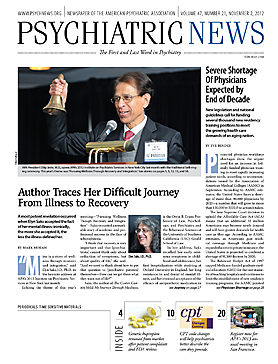Scientists are only beginning to understand how the pineal gland, located in the center of the brain, maintains the body’s 24-hour rhythms. Not only is the hormone melatonin involved, but some special types of RNA molecules seem to be as well, researchers reported online August 14 in Proceedings of the National Academy of Sciences.
The senior researcher was David Klein, Ph.D., chief of the Section on Neuroendocrinology at the Eunice Kennedy Shriver National Institute of Child Health and Human Development, a division of the National Institutes of Health.
The special type of RNA molecules are called long noncoding RNA molecules and are distinct from the better-known messenger RNA molecules that translate DNA into proteins. Klein and his colleagues identified 112 long noncoding RNA molecules in the rat pineal gland whose levels rose and fell in synchrony with 24-hour cycles of light and darkness.
Activity of some of the molecules peaked at night and diminished during the day, while the activity of the remainder peaked during the day and diminished at night. And when the researchers disrupted the rats’ regular day-night light cycle by turning on a light during a typical dark period, the levels of most of the long noncoding RNA molecules rapidly decreased.
“We were overwhelmed and surprised by our discovery that these long noncoding RNAs exhibited enormous day-and-night differences in their abundance,” Klein told Psychiatric News. And while the role of the long noncoding RNAs is not yet known, they may be key players in circadian rhythms, Klein suspects.
Since the hormone melatonin, which is made by the pineal gland, is involved in sleep and wake cycles, the question arises as to whether the long non-coding RNAs interact with melatonin. “We don’t think so,” Klein said, “but it has really not been studied. We think that they may be related and that both of them may be controlled by common mechanisms. That is to say, the neural control of the pineal may be controlling both melatonin production and in parallel the long noncoding RNAs.”
Even though the role of the long non-coding RNAs in circadian rhythms is unclear, Klein believes that their findings have implications for psychiatrists. The molecules “may be a part of the brain, of the nervous system, that has been ignored. Also, since people working in the prostate cancer field have discovered that they can identify, in blood, long noncoding RNAs from the prostate, it might be possible to identify, in blood, long noncoding RNAs from the brain as well and thus learn more about how the brain works.”
The study was funded by the National Institutes of Health, the Biotechnology and Biological Sciences Research Council United Kingdom, the Danish Medical Research Council, the Lundbeck Foundation, the Novo Nordisk Foundation, the Carlsberg Foundation, and the Simon Fougner Hartmanns Familiefond.

